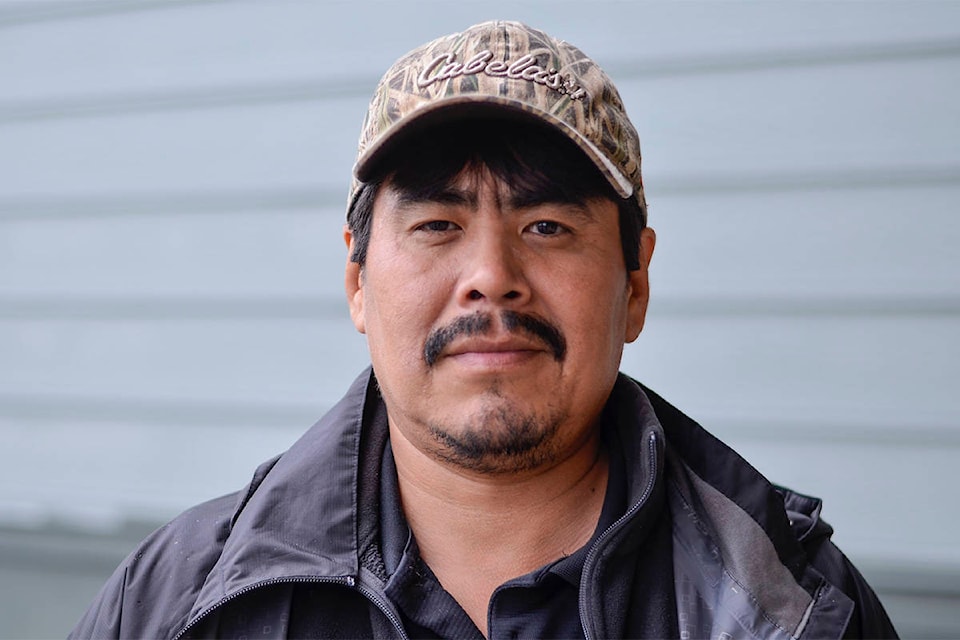Selkirk First Nation has come out with a community-based salmon management plan, a culmination of work that took more than two years.
Recommendations include limiting catches to 15 chinook salmon along the Pelly River (this number can fluctuate depending on the year); releasing female fish; using one net measuring approximately 15 metres., with 12 to 15 cm meshing; and ongoing monitoring of the camps to ensure they’re abiding by the standards.
The rules have been being implemented over three years before the document was published earlier this month, said coordinator Eugene Alfred. The hope is that an official plan will make the recommendations carry even more weight.
“It began as how can we manage this, exercising our rights, you know, being managers and not being managed,” Alfred said. “We wanted a document that would highlight Selkirk’s traditional views and values. It’s an educational factor, too, not only for our people, but for outside.
“Before the plan came out, there were maybe misunderstandings as to why we still fish,” Alfred added. “There is a level of understanding that we only take what we need.”
The document obtained by the News lays out the plan and teachings and outlines best practices for fishing — taking the younger fish at an earlier date, for example.
“If you fish too late in the season, you’re getting older spawners, but you’re also running out of time for that weather to be able to dry and cure your fish,” Alfred said.
The recommendations outlined in the plan are voluntary and specific to the community fish camps. It’s also a flexible endeavour, in that it can change by the year to compensate for the amount of fish in the run, Alfred said.
About 95 per cent of camps are on the Pelly River, a few more around Minto, he said. There are 25 active fish camps in the traditional territory, he said, “the most in all the Yukon.”
Alfred said there’s been an uptick of chinook salmon this year – about 500 more than last year’s 9,000.
Mary Ellen Jarvis, fisheries manager at Fisheries and Oceans Canada, said about 58,000 salmon have entered the Yukon this year.
“It’s pretty significant,” Alfred said, “but we still have to be cautious, respectful, in how we use this food source.”
This summer, he said there were about 30 fish per camp, a dip when compared to previous years.
The Selkirk plan falls in step with agreements struck between the federal government and First Nations in the Yukon, in that First Nations can manage wildlife populations within First Nations traditional territories.
Selkirk First Nation isn’t alone. It’s joined by several other communities like Teslin Tlingit Council, Vuntut Gwitchin First Nation, Tr’ondëk Hwëch’in, among others, Jarvis said.
“Most communities are at some stage of a management plan and, of course, some are a little further along,” she said.
“We are working closely with Yukon First Nations and the more and more these management plans come online, the more we’re seeing communities take local control,” Jarvis said. “Those plans are powerful, and the ownership is with the First Nation.”
Selkirk’s plan boils down to taking fewer fish and improving the quality of the salmon run, said Sebastian Jones, wildlife and habitat analyst for Yukon Conservation Society.
“For many years, (Fisheries and Oceans Canada) has managed the salmon run according to quantity of fish reaching the spawning grounds and they’ve more-or-less ignored the sex of the fish and the size of the fish.”
In terms of what’s next for Selkirk’s management plan, the idea is to preserve it as a “living document,” Alfred said.
“It’s been distributed throughout our community,” he said. “We also shared that document with Fisheries and Oceans.”
Contact Julien Gignac at julien.gignac@yukon-news.com
